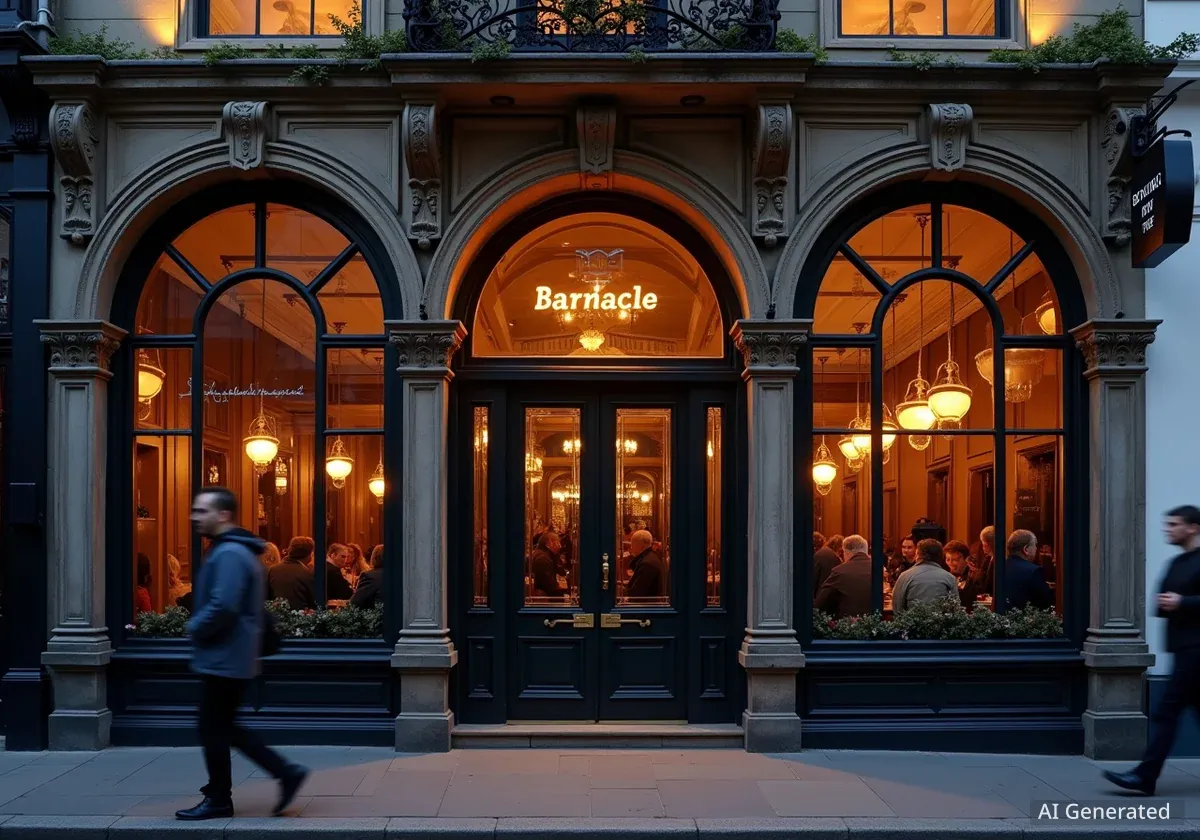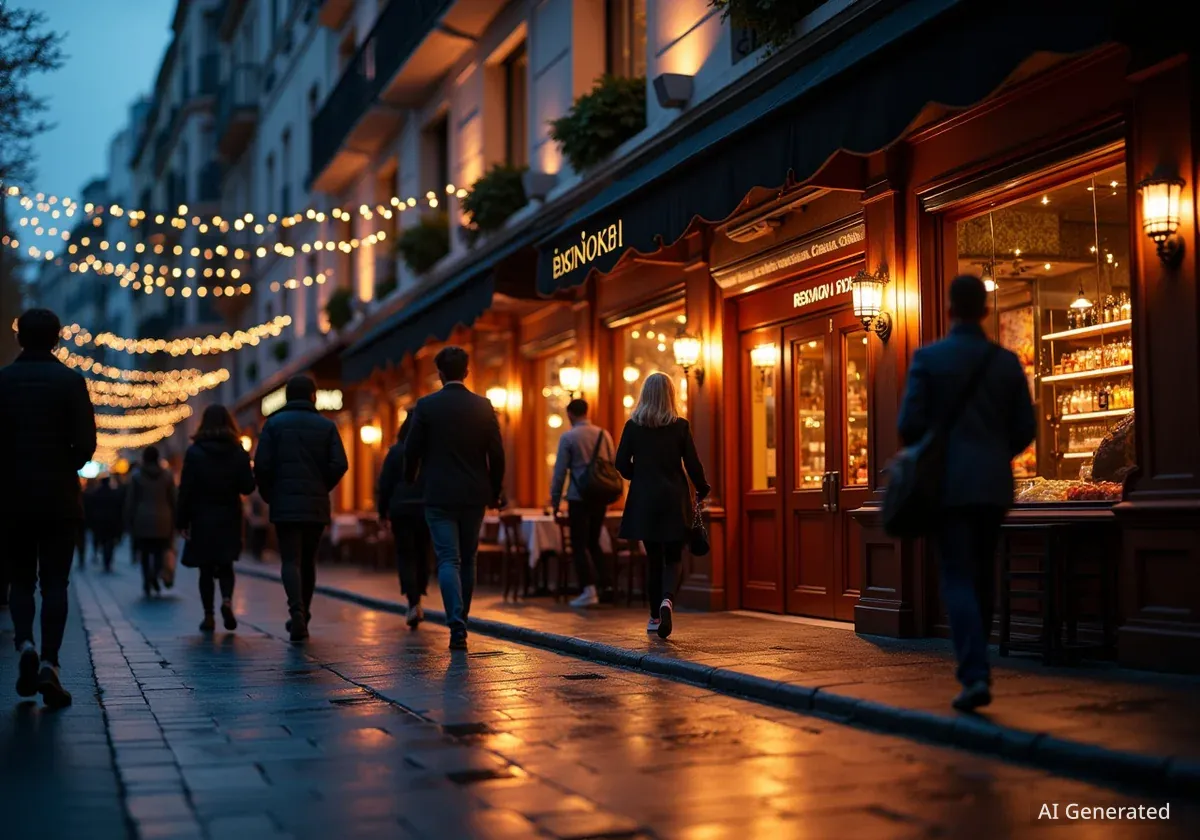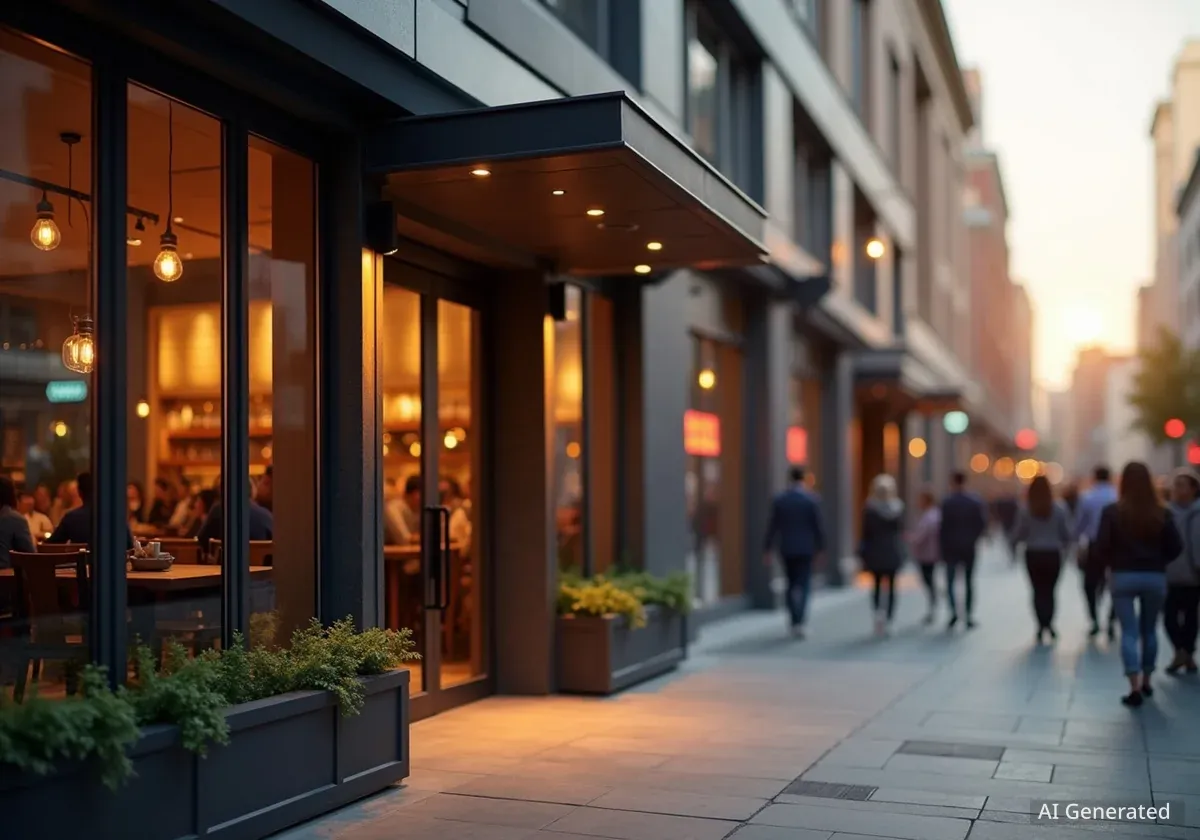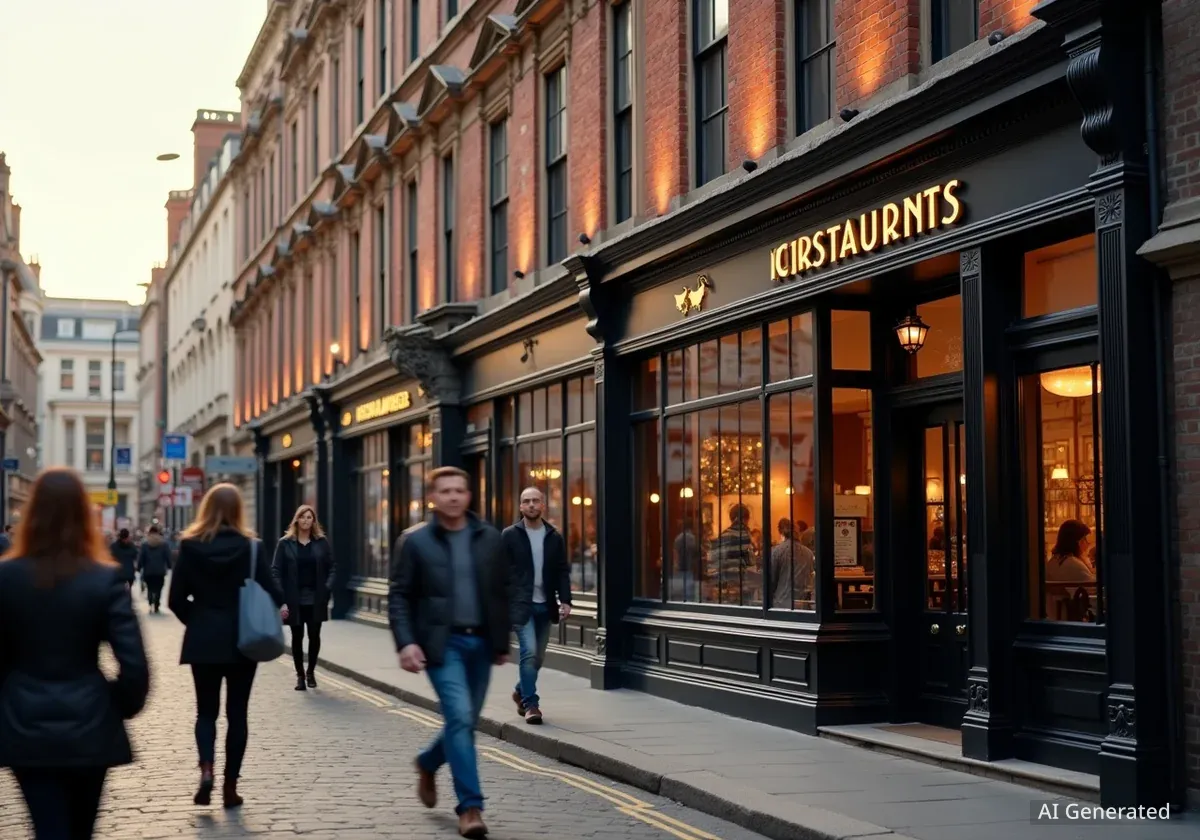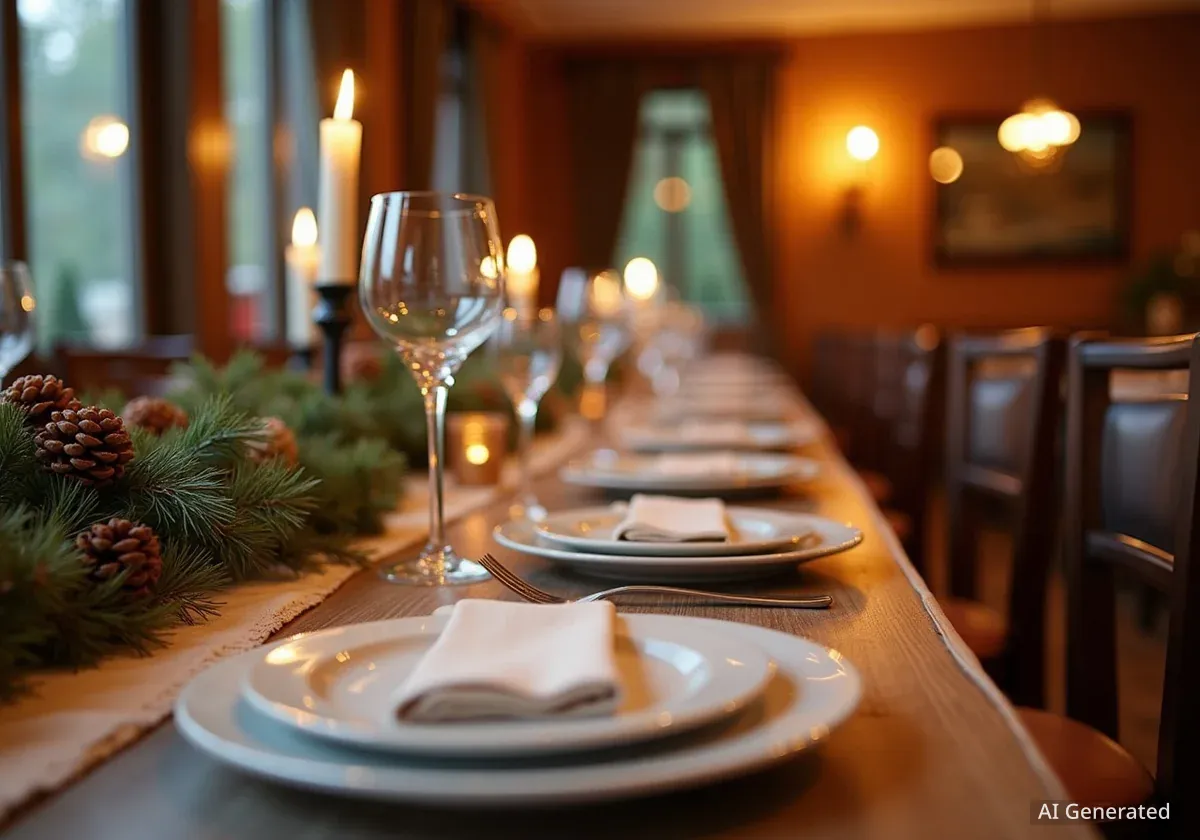A historic Grade II listed building on Hardman Street in Liverpool city centre has started a new chapter with the opening of Barnacle, a new restaurant by acclaimed chef Paul Askew. The site, originally the Royal School for the Blind, has undergone numerous transformations over the past decade, serving as an art venue and home to several popular eateries.
The new venture continues the building's evolution, blending Liverpool's rich maritime and culinary history within its historic walls. This latest opening marks another significant moment in the life of one of the city's most cherished architectural landmarks.
Key Takeaways
- Chef Paul Askew has opened his new restaurant, Barnacle, in the former Royal School for the Blind building on Hardman Street.
- The Grade II listed building dates back to the mid-1800s and has a rich history, including being the first school for the blind in Britain.
- In the last decade, the venue has hosted the Liverpool Biennial (2014), The Old Blind School restaurant (2015), and The Florist (2018).
- Barnacle's concept is inspired by Liverpool's history as a port city, focusing on local produce and global culinary influences.
A New Culinary Era on Hardman Street
The latest establishment to occupy the historic space at 24 Hardman Street is Barnacle, a restaurant and bar concept led by renowned local chef Paul Askew. The restaurant officially opened its doors this month, introducing a dining experience that celebrates Liverpool's global connections.
The concept for Barnacle first appeared at Duke Street Market in 2021 before operating as a pop-up on the Royal Albert Dock. Its permanent home in the Hardman Street building allows the team to fully realise its vision.
According to the restaurant's mission, the menu reflects the city's port heritage, drawing inspiration from the ingredients and culinary traditions that have arrived in Liverpool from around the world. It places a strong emphasis on using locally sourced produce to create its dishes.
The Building's Significant History
The building itself holds a profound place in Liverpool's social history. Designed by architect Arthur Hill Holme, it was constructed in the mid-19th century to serve as the new premises for the Royal School for the Blind.
The school was a pioneering institution. Founded in 1791, it was the first school for the blind in Britain and the second of its kind in the entire world. Its move to the purpose-built Hardman Street location represented a significant step forward in providing education and skills to visually impaired individuals.
Architectural Significance
The building's Grade II listed status protects its historical and architectural importance. This designation means it is recognised as a nationally important structure, with its exterior and key interior features preserved for future generations.
From School to Modern Venue
After the school relocated, the building entered a new phase. For many years, it was used by the Merseyside Police as their divisional headquarters. Following this, it became a focal point for the city's cultural scene.
Its recent history of public use began prominently in 2014, when it was selected as a key venue for the Liverpool Biennial, the UK's largest international contemporary art festival. The building's raw, historic interior provided a unique backdrop for installations by artists from around the globe.
A Decade of Dining Transformations
Since its role in the art world, the Hardman Street site has become a sought-after location for restaurant operators, leading to a series of distinct and memorable dining venues over the past ten years.
A Timeline of Recent Occupants
- 2014: Liverpool Biennial art exhibition space.
- 2015: The Old Blind School restaurant opens.
- 2018: The venue is transformed into The Florist.
- 2025: Barnacle by Paul Askew begins its residency.
The Old Blind School Restaurant (2015)
In 2015, the building embraced its heritage directly with the opening of a gastropub named 'The Old Blind School'. This restaurant was known for its classic British menu and its interior design, which featured dark wood, navy blue decor, and nods to the building's past.
The establishment quickly became a popular spot in the city centre, respected for its food and for breathing new life into the historic site. Many Liverpool residents will remember its distinctive style and the grand staircase that remained a central feature.
The Florist (2018)
A dramatic change occurred in 2018 when the venue was completely reimagined and relaunched as 'The Florist'. This new concept was a stark contrast to its predecessor, with a focus on creating a highly aesthetic and photogenic environment.
The interior was filled with floral arrangements, pink hues, and striking features, including a full-size tree installed inside the main dining area. The Florist became known for its cocktails and vibrant atmosphere, attracting a new generation of diners before its closure last year.
Barnacle's Vision for the Future
With the arrival of Barnacle, the building begins another chapter. Chef Paul Askew's involvement signals a return to a focus on high-quality, locally-rooted cuisine. The interior design of the new restaurant is described as sophisticated, respecting the building's historic character while creating a modern and welcoming space.
The restaurant aims to secure its place as a key destination in Liverpool's thriving food scene. By honouring the city's past and championing its local suppliers, Barnacle looks to create a lasting legacy within the storied walls of the former blind school.
